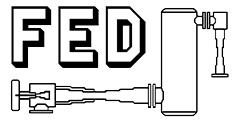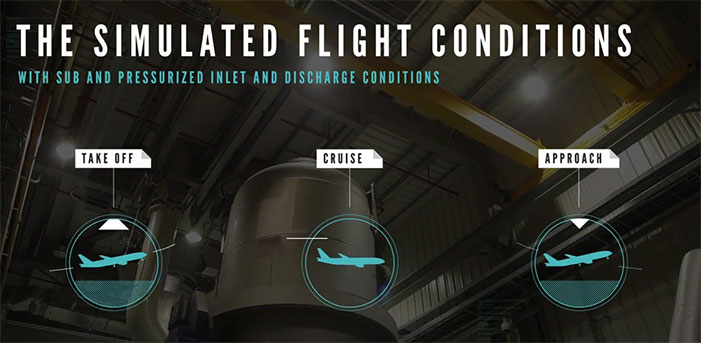Aircraft engines have to be exceptionally robust when in operation. They also need to be as energy efficient as possible but powerful nevertheless. Which is why researchers are constantly working on enhancing aircraft turbines. To forge ahead with this research and development, one of the world’s largest and most modern engine test rigs was commissioned near the Polish capital of Warsaw. Polonia Aero Laboratory’s Cold Flow Turbine Test Facility enables testing of turbine prototypes and experimental aircraft engines under industrial conditions. As key components of this facility, Körting ejectors create a vacuum without which the test rig wouldn’t function.
Outside view of the main building where the sophisticated test rig is located
Testing under actual flight conditions
In order to test aircraft engines realistically, the conditions occurring during an actual flight have to be created first. The air pressure acting on the engine changes depending on the altitude. When altitude increases, the air pressure in the earth’s atmosphere drops. If the air pressure at sea level is approx. 1013 hPa, it decreases to about 500 hPa at an altitude of 5.6 km. These changes in air pressure were created in the testing area by Körting jet ejectors.
Three Körting gas jet vacuum ejectors are used on the turbine test rig to generate the ambient pressure that is set in each case. The vacuum generated by these ejectors on the test rig therefore simulates the altitude. A complex control system allows precision activation of the three gas jet ejectors. As a result, the operative on the test rig can simulate ascents or descents by changing the vacuum.
At lengths of over 14 metres, the gas jet vacuum ejectors supplied are some of the biggest gas jet vacuum ejectors that have ever been produced. The biggest jet ejector achieves suction power of up to 317,000 m³ per hour.
Dynamic pressure also via a jet ejector
When using aircraft engines, inflow and the resulting dynamic pressure are further important factors. Air accumulates in front of the engine due to the speed that an aircraft reaches. This also has to be simulated when conducting research and development on the turbine test rig. And the company picked Körting technology for this purpose. A fourth gas jet vacuum ejector simulates the inflow of air on the test rig. This is the smallest of the four jet ejectors used and conveys 37,500 m³ of air per hour as a compressed air stream into the test rig.
Thanks to the components supplied by Körting for generating the vacuum, the researchers can test the aerodynamics of each of the engine components under real conditions. And they can do all that with their feet still touching the ground. The facility’s strong ties to universities lays the foundations for tomorrow’s energy-efficient aircraft engines.






